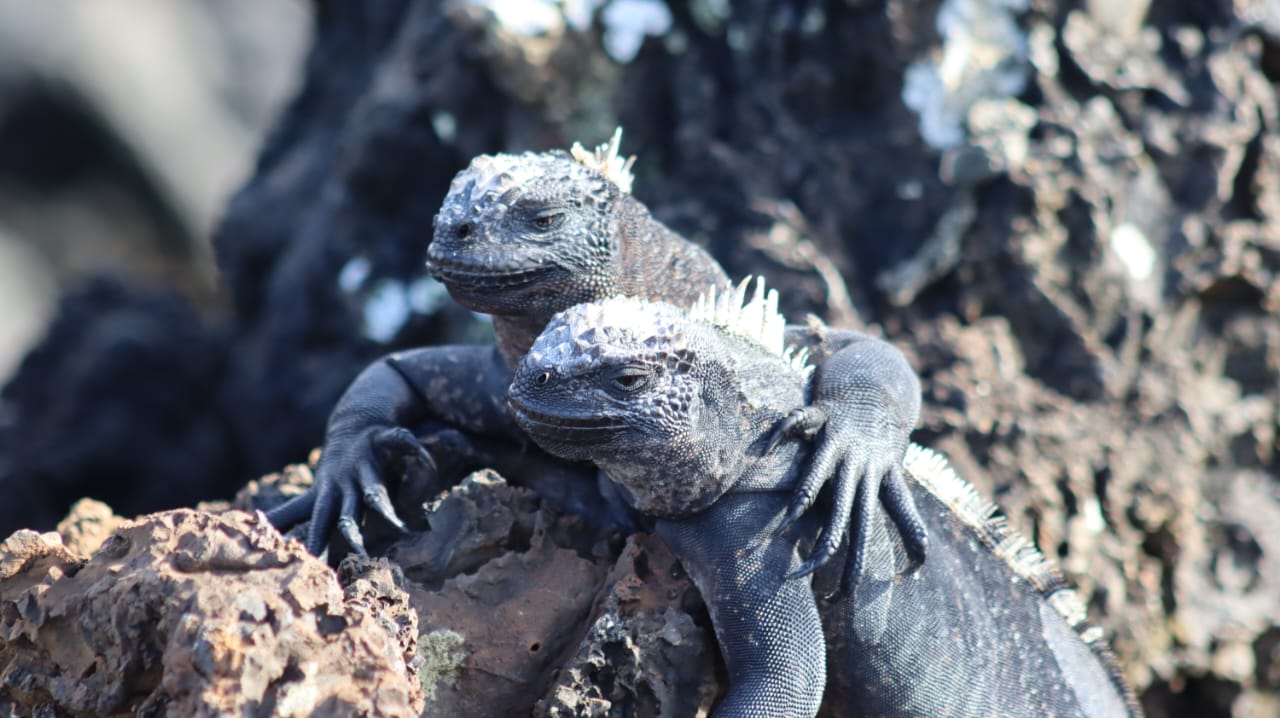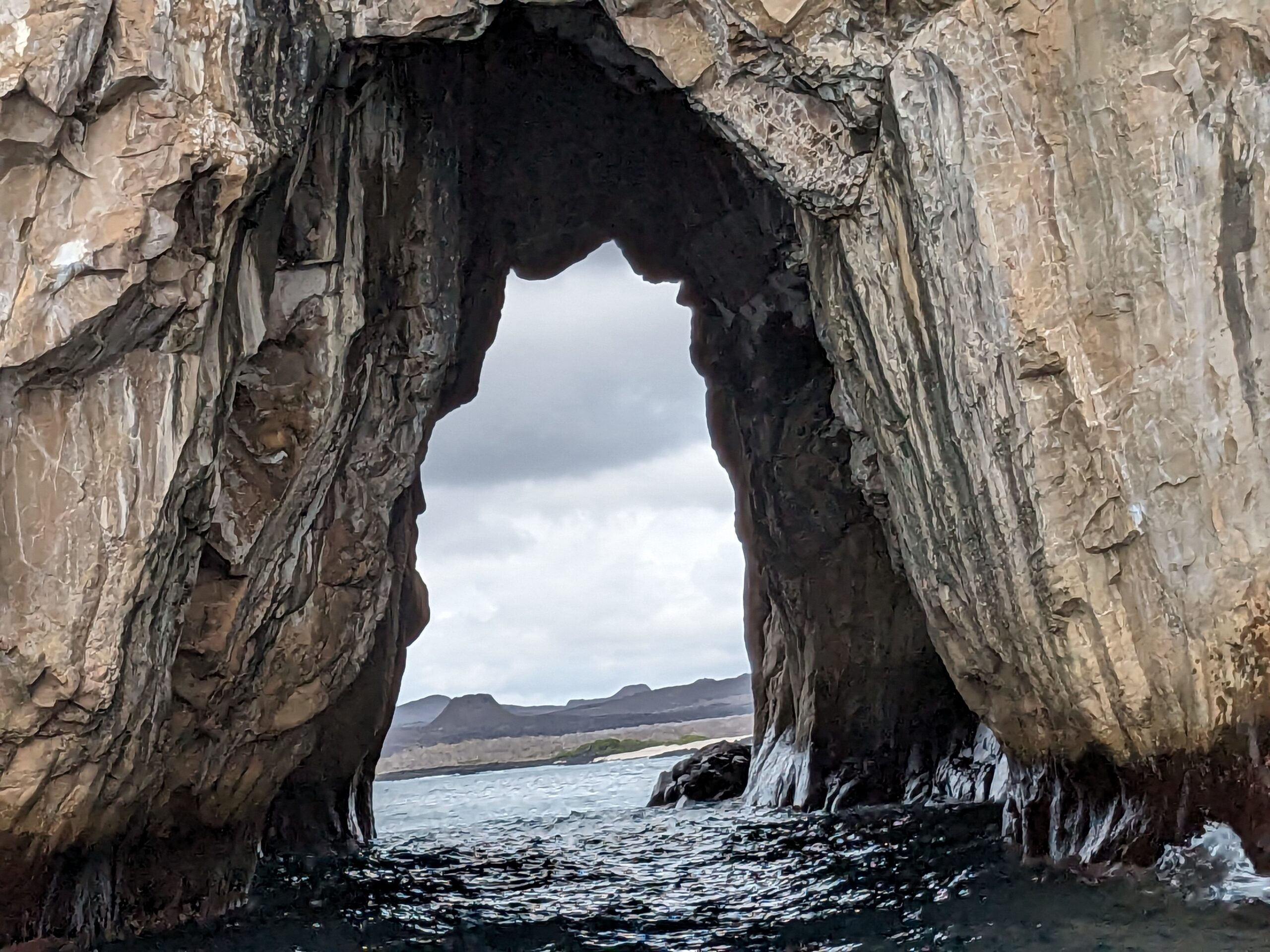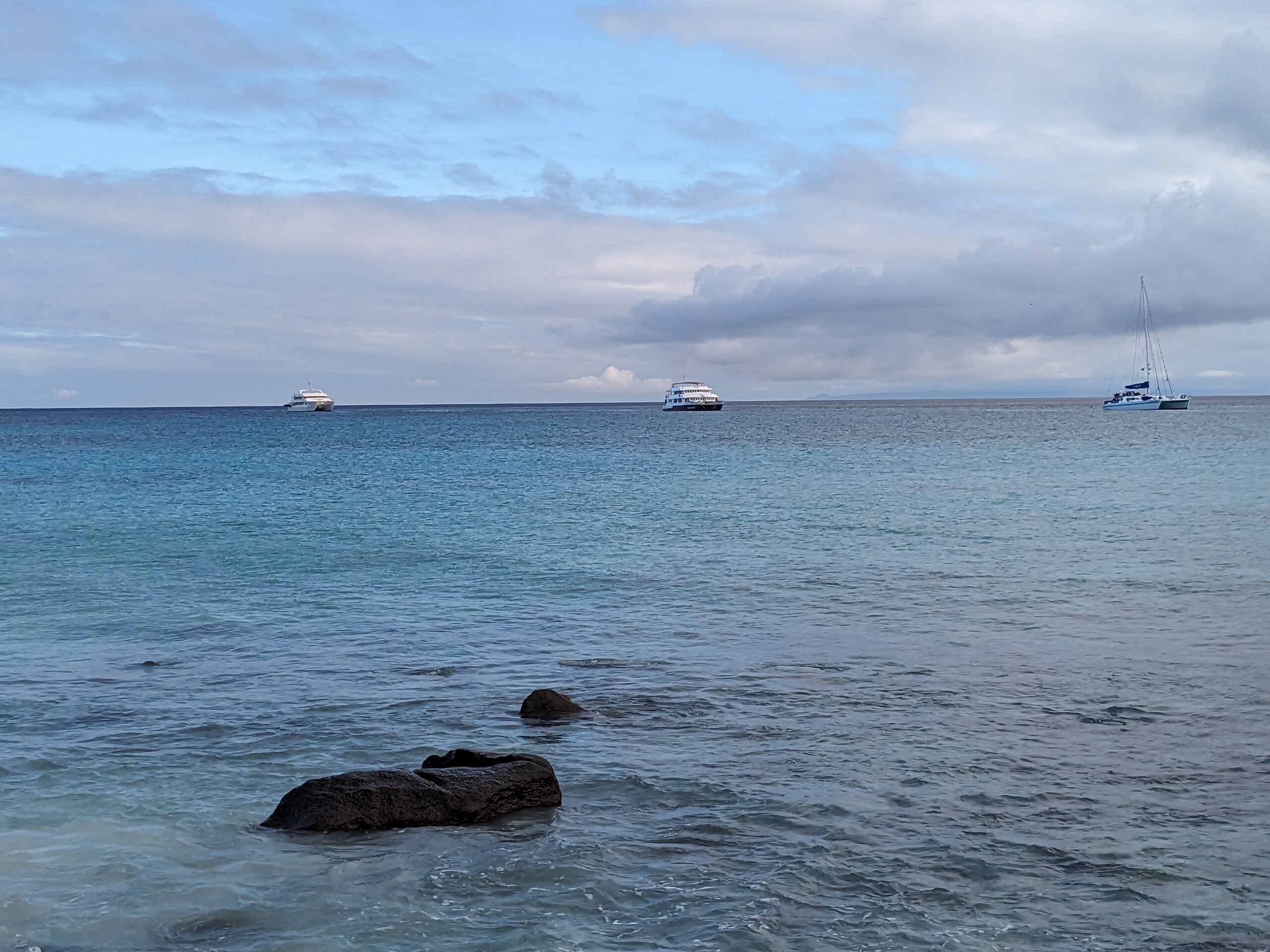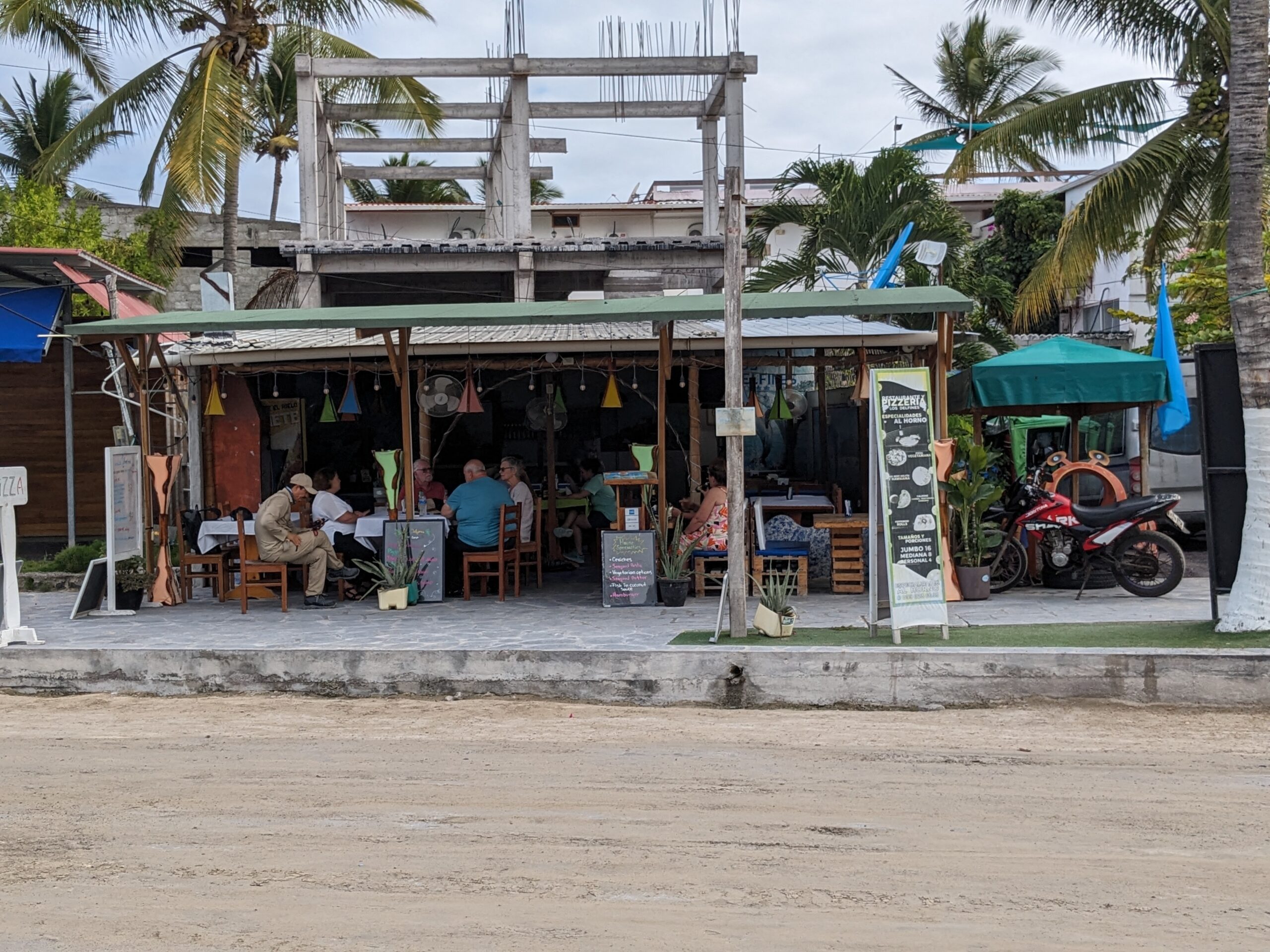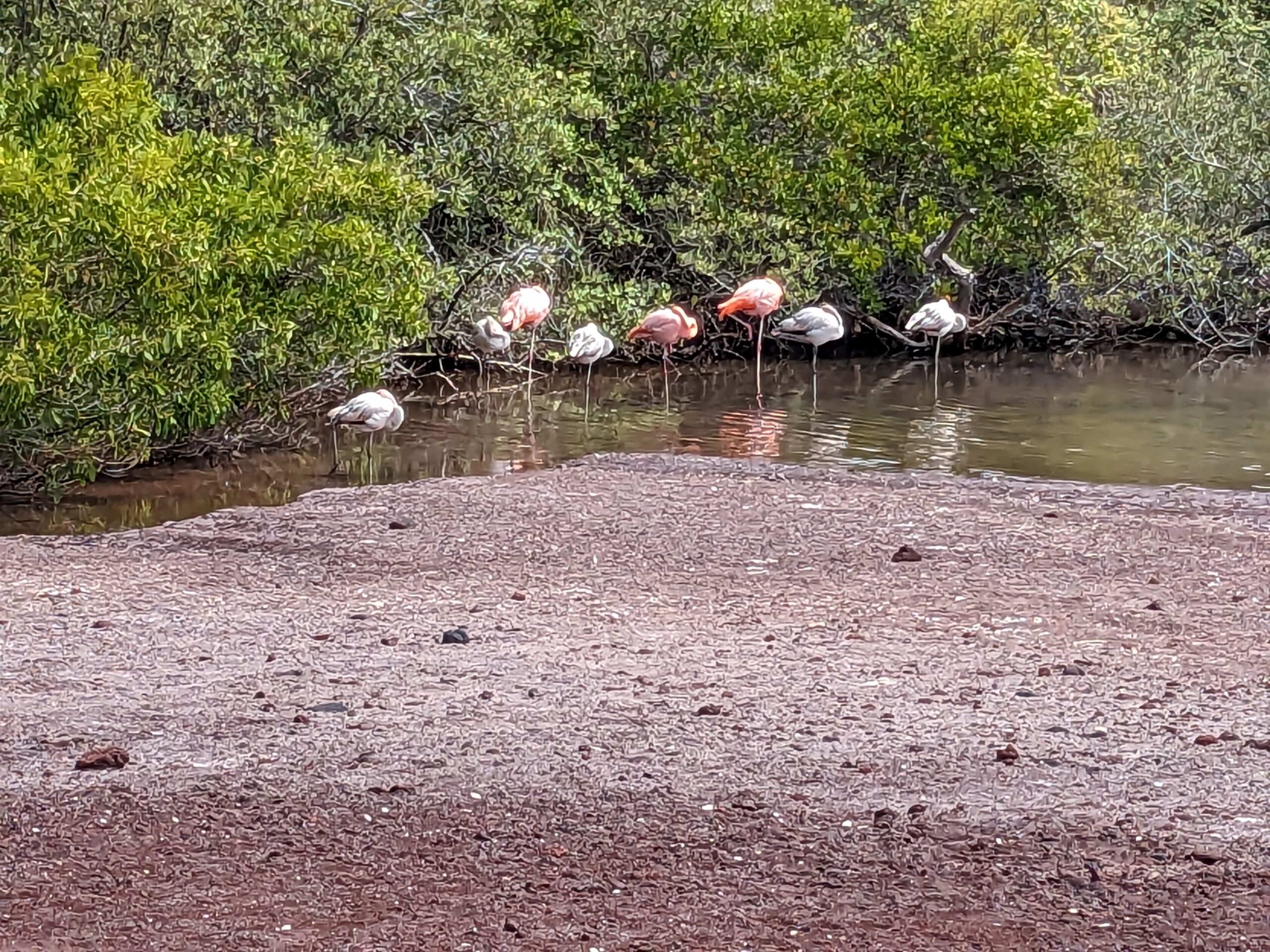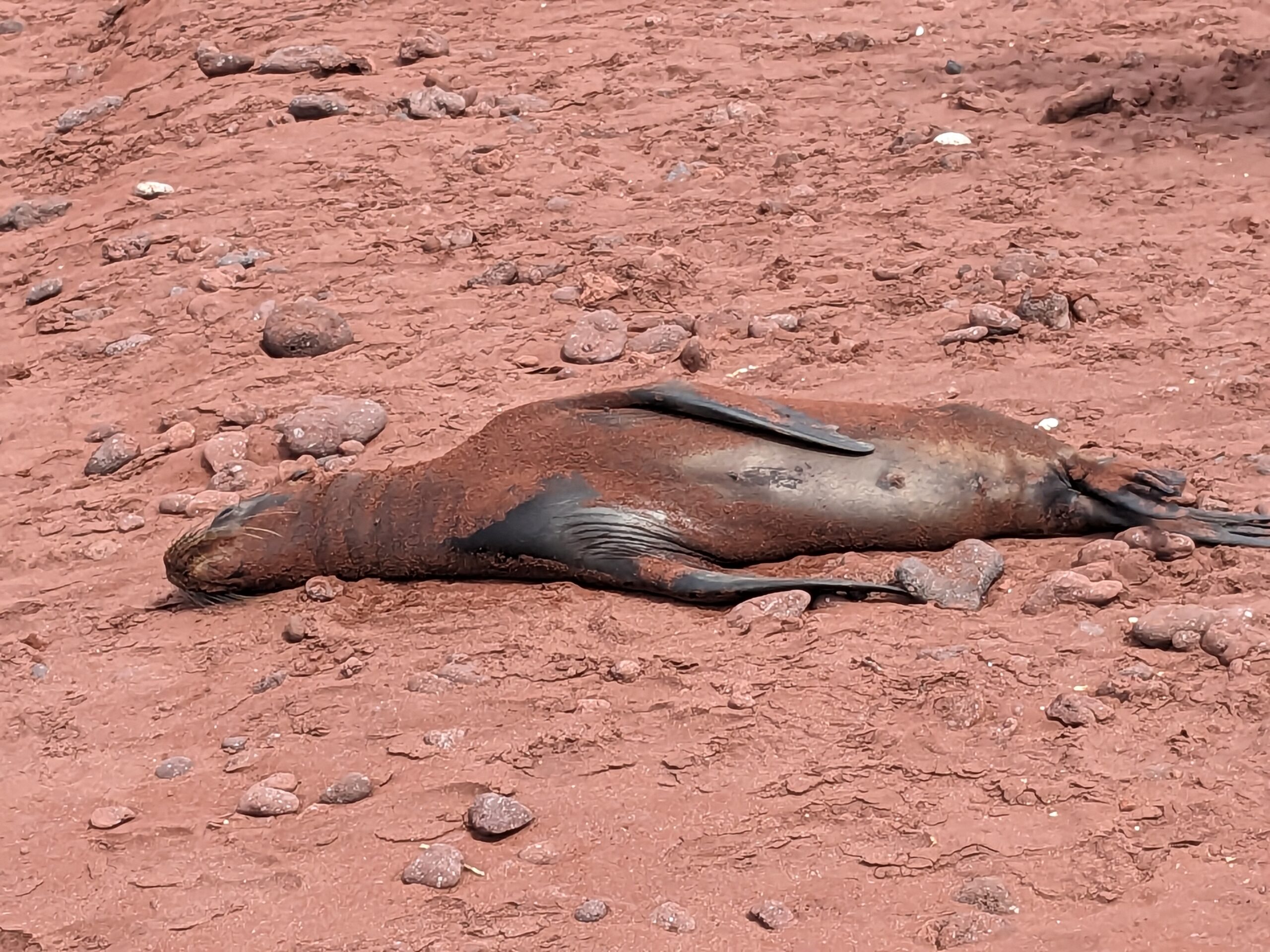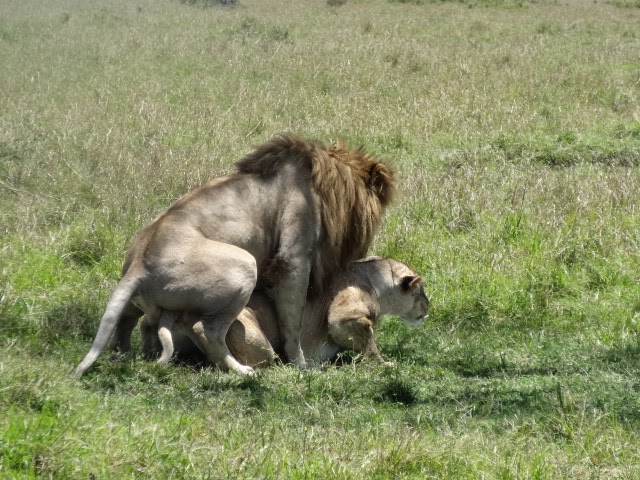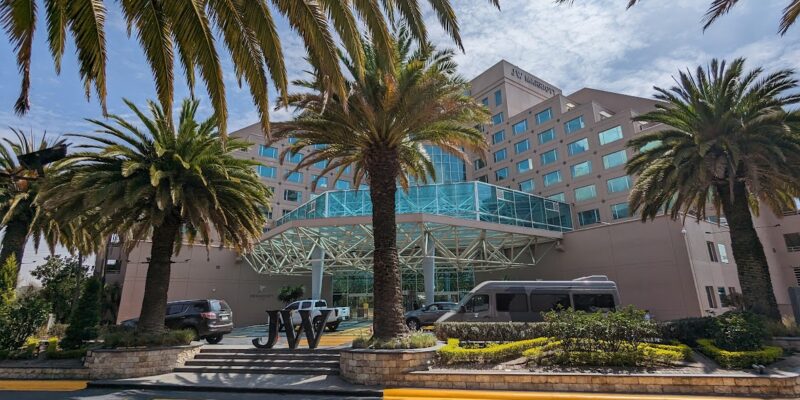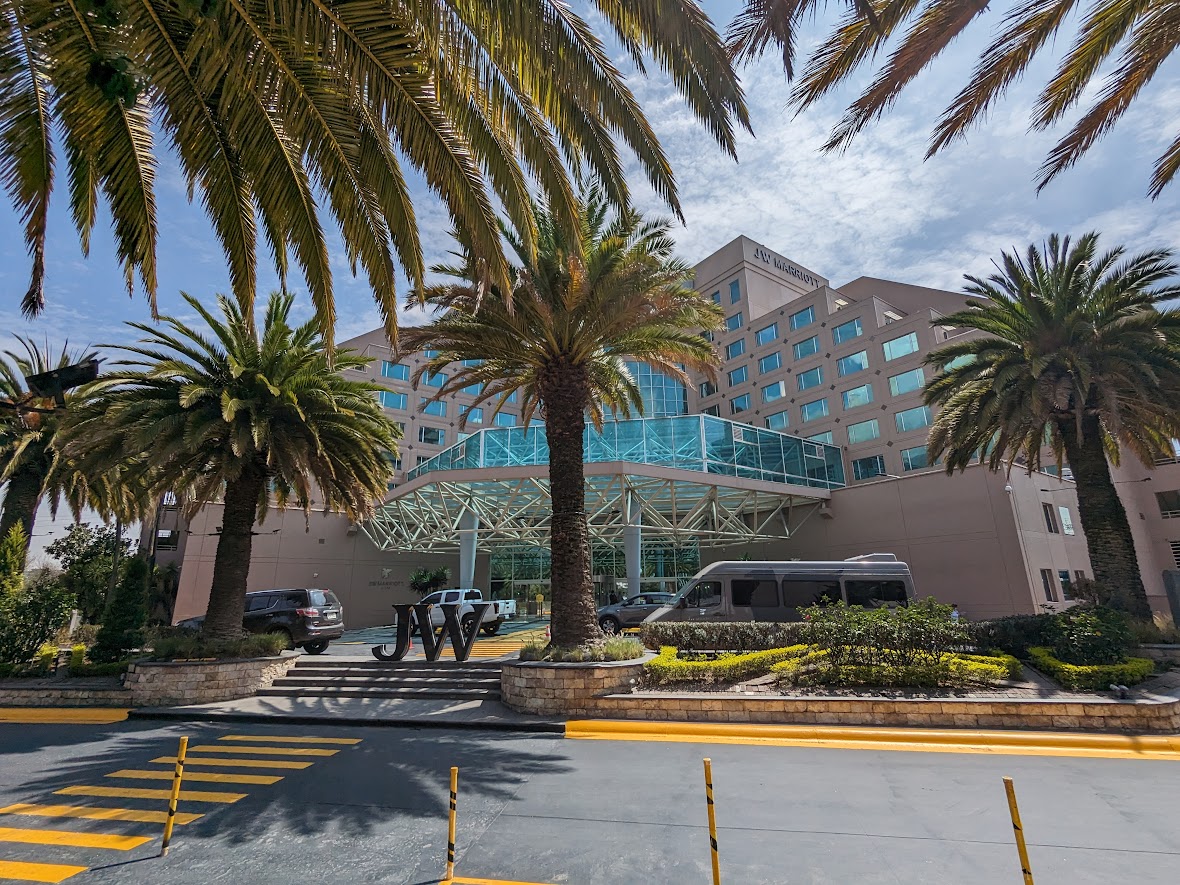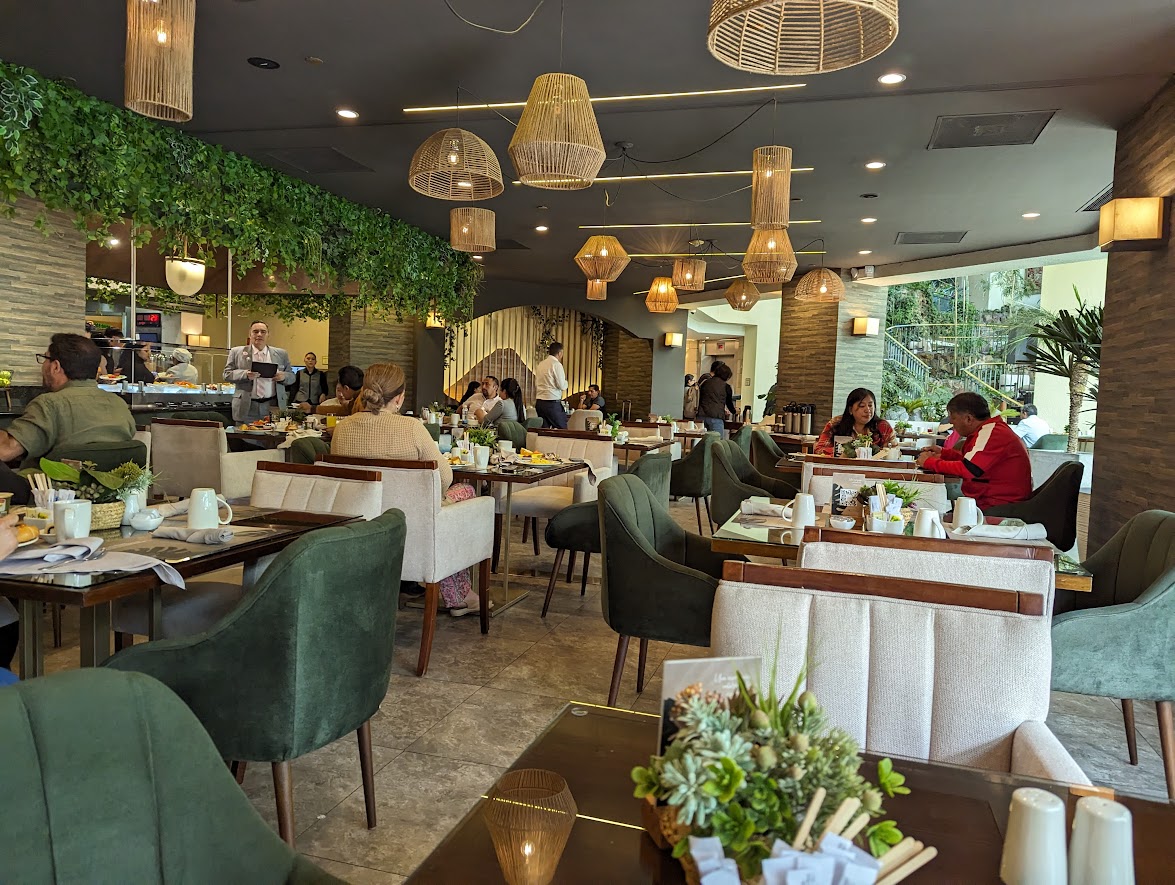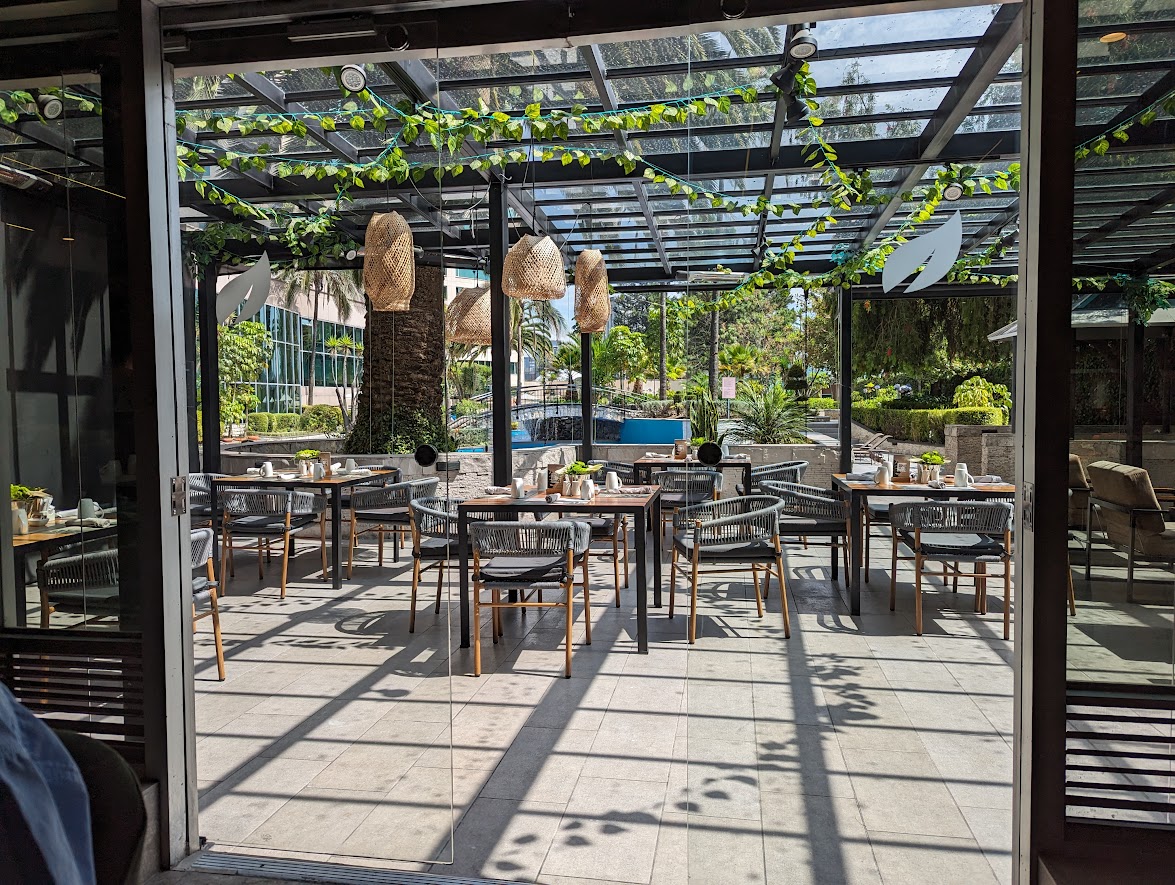
Sorry, there was no post yesterday. I had run out of steam and simply couldn’t muster the energy to get it done by the time we returned from Manta. We had no groceries when we arrived on Tuesday, and for the second night in a row, we didn’t have anything for dinner.
There was no supermarket, open shop, or restaurant nearby, but we made it through the night without a bite to eat since breakfast. The prior night we arrived in Manta too late to eat, and that’s when the lovely young daughter of the hotel owners went to a little local market to get me some cheese.
I don’t know how to start this post. Shall I minimize the ordeal of the past 48 hours to indicate we are less adaptable than usual? Or shall I, in our usual way, tell it like it is, causing our readers to perceive we aren’t as tough as we used to be? I’ll opt for the latter and tell you exactly what happened.
Sure, we may not be as tough as we were years ago. We’re getting older and have various medical issues, typical for our ages, that impact how well we tolerate certain situations. But the fact remains, regardless of our ages, we still don’t whine and complain during difficult times and forge ahead, doing the very best we can with a good attitude, however difficult it may be at any given time.

Yesterday was one of those times. I don’t know how we got through it, but we did. And now, here we are in our oceanfront holiday home, not quite unpacked but with laundry done, groceries purchased, and a roasted chicken dinner on the menu for tonight.
First, before I go on, I want to preface that the property owner, Igor, who lives in Montenegro (formerly Yugoslavia), is a fantastic guy. Had he known what would transpire on Tuesday, he would have gone to any lengths to avoid the frustration we experienced. He’s making everything right over the next few days.

So here’s how it rolled out. As mentioned in Tuesday’s post, we had a long wait at the gate to Mirador San Jose for Igor’s house manager to arrive. We arrived at 10:45 and ended up sitting in the car with nothing to drink, no bathroom, and turning the car off and on to cool us down in the warm, humid weather on a cloudy day.
At 1:10 pm, I walked up to the guard gate building and explained our plight to the guard. He raised a piece of paper showing our names, that we were expected to arrive, and that Sylvie, Igor’s property manager, was supposed to come at 11:00 am to let us into the property.
Although the guard and I somehow managed to communicate, he even had Sylvie’s phone number programmed into his phone. Immediately, he called her, and she acted as if she didn’t know we’d been waiting there for 2½ hours. Igor had told her we’d be arriving at 11:00, but she didn’t bother to show up.

After the guard called her, apparently she lives nearby, she didn’t arrive until 15 minutes later, acting as if nothing was wrong. We both surmised she had forgotten we would be at the gate at 11:00. She spoke no English other than a few words. But we don’t expect people to speak English in other countries. It’s us who has to figure it out.
When we finally got to the property, she handed us a pass to enter and exit through the gate. I asked her many using my choppy Spanish language skills, but she didn’t seem to know the answers to many of the questions, even when I used the translator on my phone.

After she left, we were at a loss as to how to handle the following comments and questions, which I later posed to Igor on a WhatsApp call:
Sylvie didn’t know anything…if we hadn’t had the gate people call her, she wouldn’t have shown up. Please see the bold print after each issue to see what has been done
- Where does the trash go? There’s a bin down the road, and we can dump our bagged trash in the bin any day of the week.
- We couldn’t find any of the restaurants or grocery stores Sylvie mentioned. None of the restaurants she mentioned were open, or after reading the menus for the few that were open, we realized most likely we wouldn’t be able to dine out here. All of the food is deep-fried.
- The pass to the guard gate wasn’t working. Igor contacted the gate people and got our gate pass activated. It’s working now.
- Who will provide more gas tanks when the stove runs out? Igor contacted a guy who will deliver extra gas tanks, and when we run out, he will get him to install the new tank.
- The towels in the bathrooms are threadbare. Igor instructed Sylvie to purchase quality towels, which she delivered yesterday.
- There were minimal supplies at the house when we arrived…toilet paper…soap….trash bags. Without cash to shop at the area’s tiny shops, we had to drive back to Manta (one hour each way) to find an ATM for cash (they use American dollars here). Then, we found a grocery store and purchased about 80% of the items on our list. The larger grocery store in Manta accepted credit cards.
- The water machine wasn’t working. What do we do about bottled water? Igor said we have to leave the big bottle on the sidewalk with $1.25 underneath the bottle, and once a week, the water guy will come by and refill the bottle. What day? No one knows.
- Who do we contact for maintenance? We will contact Igor.
- There were several bulbs burnt out. Today, a guy came and replaced all the bulbs except one he needed to purchase and then returned in the next few days to install it.
- WiFi doesn’t work upstairs. We need WiFi on both levels. Igor is working with the WiFi service providers to install an additional router upstairs.
- I would like to have known we needed to bring a lot of cash when most small-town shops and restaurants don’t take credit cards. Most guests stay a few days. We are staying 79 days, and our need for cash is much greater.
- There is no book in the house on handling any of these issues. With these questions answered and mostly resolved, we won’t need a book of instructions. But we always appreciate these books.

The beach along the road to Manta, taken on our second trip in two days.
Of course, after all these issues arose, I contacted Igor, asking him to call me on WhatsApp, and he quickly responded as usual. He’d since addressed each of the above issues, and they are getting accomplished one by one. Igor has been responsive and supportive and shocked we had to deal with many of these issues. Igor informed us that good help is hard to find in Ecuador.
Once in the house, after doing considerable research, we concluded we had no choice but to drive back to Manta for the cash and to the supermarket. All the local markets are like “Quick and Easy” type stores, carrying soda, snacks, rice, and beans. There’s such a little shop here in the gated community, which we’ll check out today, but I doubt it will carry anything we use.

We’ll have to drive back to Manta every few weeks to buy groceries. We purchased as much as would fit in the freezer and only a little bit of fresh produce when they don’t carry what we typically use. Most vegetables were starchy, like peas, squash, and corn. There were no frozen vegetables we would use.
Before dinner last night, we had no water. We contacted Igor, and he said to leave the faucets open to clear the lines of air. We did this, and it worked.

I think we’ll be OK from here. We don’t like the prospect of driving to Manta every few weeks, but we will go check out a meat market in Puerto Cayo, about 30 minutes down the highway. If we can purchase meat, we can go to the supermarket once a month for staples at the same time as returning the rental car once a month. They wouldn’t allow us to keep the car for more than 30 days and put a hold on a credit card for $5,000, the most we’ve ever seen. It’s Avis, so we felt it would be OK, and most likely, they’ll release the hold in a timely manner.
We’re feeling better now that most of these issues are being resolved. Right now, I am having lots of Afib bouts and, fortunately, have medication with me for such an occasion. The side effects make me feel awful, but it’s what I have to do right now.
Last night, we were so exhausted that we made scrambled eggs for dinner. Bacon is basically unheard of in Ecuador. Tonight, we’re roasting two chickens for dinner with rice for Tom. We won’t be eating salads while here or any raw vegetables due to a high risk of illness from the impure tap water. I didn’t even buy celery, one of my favorite additions to various dishes.
I will try taking photos, but it’s been raining since we arrived. Once we have a sunny day and I feel better, I will be motivated to take photos. More on this story in tomorrow’s post.
Be well.
Photo from ten years ago today, October 25, 2013:

























